Gigabyte Z590 Aorus Tachyon gaming motherboard review | PC Gamer - cortezwaspupperen
Our Verdict
The Aorus Tachyon is primarily built for a rather narrow extreme OC use case, but Don River't underestimate IT A a well conspicuous and debonnaire control board if you'rhenium chasing utmost efficiency too.
For
- Mega VRM and cooling
- Endless tweaking options
- Advantageously featured for an OC concentrated board
Against
- There are better options if you're not a serial tweaker
- Inescapably dear
PC Gamer Verdict
The Aorus Tachyon is primarily built for a instead opinionated extremum OC use case, but don't underestimate it as a fit faced and refined board if you're chasing maximum efficiency too.
Pros
- +
Mega VRM and cooling
- +
Endless tweaking options
- +
Well featured for an OC focused board
Cons
- -
At that place are better options if you're not a serial tweaker
- -
Unavoidably expensive
Overclocking focused motherboards have ready-made a proper retort. This time around all the major manufacturers have Z590 boards specifically intentional for serious overclocking. There's the Asus Maximus Apex, ASRock OC Rul, MSI Unite-X, EVGA Dark, and the beauty we have here in the lab today, the Gigabyte Z590 Aorus Tachyon.
Most high-end motherboards have a play focus, but underneath their RGB snarling beast and colorful warrior facades, they don't really offer a hell of lot that's truly gaming limited or declare oneself functions that a 'normal' motherboard can't do.
Overclocking motherboards are different though. Just look at the Aorus Tachyon. The dual memory slot design, all those buttons and switches, a monstrous VRM and a unique layout are every aimed at making life easier for overclockers. Then at that place's a comprehensive BIOS with extensive tweaking options. It's clear-cut that this isn't a regular board with a busy sticker slapped on.
Although an Intel Core i9 11900K ISN't a exemplar of an overclockable CPU unless you're using sub zero temperature reduction, we are distillery happy to see motherboards built from the ground up for serious and sustained overclocks.
At that place's a destiny to cover when examining the layout. The CPU socket area is free from traditional capacitors, qualification it insulation friendly, and in that location are only two memory slots despite information technology being an E-ATX board.
The idea behind having only two instead of four is to downplay vestige complexity and contribute the slots nearer to the CPU. This helps reduce latency and usually allows a tiny more performance clearance compared to a four-slot design. The primary PCIe slot is not the topmost one, it's the one below IT. This is another choice to help overclockers WHO use LN2 cold a GPU by allowing extra room for pots and insulation.
You'll probably notice a whole load of buttons and switches which are all aimed at making life easier for overclockers too. Otherwise, common things like power, reset and CMOS clear switches are united by others that allow real time frequency adjustments, specific LN2 modes, profile switching, and a limp manner, among others. You'll also notice SATA and USB ports in this area. Uncomparable indeed!
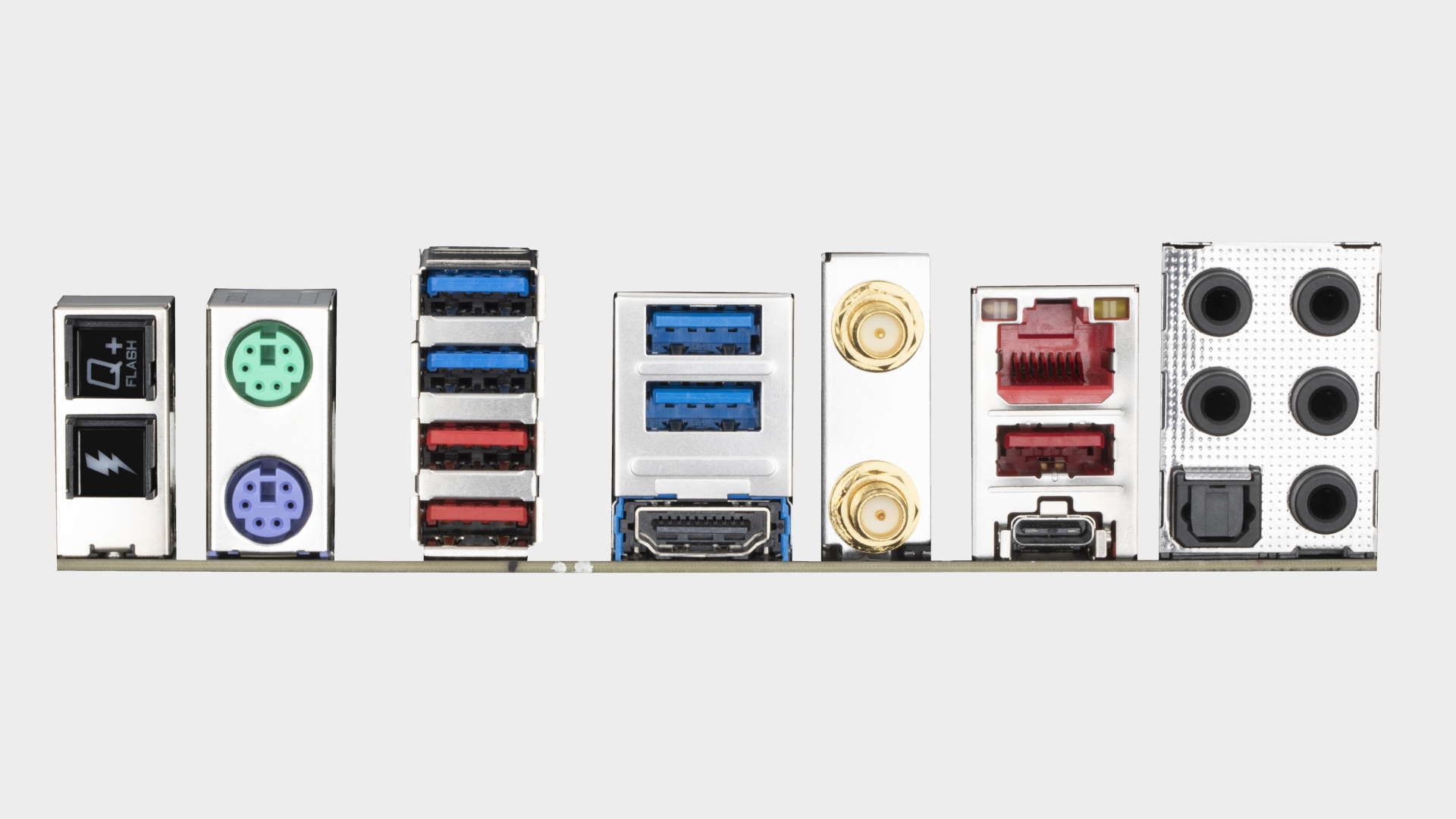
Z590 Aorus Tachyon spectacles
Form factor: E-ATX
Socket: LGA 1200
CPU livelihood: Intel 10th & 11th Gen processors
Storage: 3x M.2; 8x SATA
USB: 1x USB 3.2 Gen 2x2, up to 5x USB 3.2 Gen 2, aweigh to 6x USB 3.1 Gen 1, up to 4x USB 2.0
Picture outputs: 1x HDMI 2.0
Meshwork: Intel Wi-Fi 6E; Intel I225V 2.5G LAN
Audio: Realtek ALC1220-VB 7.1 Channel HD Audio frequency
Price: $530
The Tachyon packs in a direct 12-phase VRM with 100A power stages. We'atomic number 75 pleased to see GB stand getting sucked into promoting 9999 phases as the marketing be every last and ending all. With all that prevailing on tap, we feel sorry for those small LGA pins...
This board can smash out sustained AVX loads to the limit of LN2 cooling, then it testament laugh in our faces when presented with a humble 360mm AIO. You'll fly the coop into cooling limitations well before the board moves beyond a trot.
All this mouth off of overclocking mightiness imply that the board is a one trick pony but that's definitely not the case. LN2 overclockers make rising just a fraction of a fraction of the market, and a frequent user looking to push their 11th Gen K-series CPU with standard cooling system South Korean won't be inadequate anything in footing of connectivity. You get eight SATA ports and trio M.2 slots, USB 3.2 Gen 2 (including a Type-C 2x2 port), Intel 2.5G LAN and Badger State-Fi 6E, all of which you'd expect connected a high-terminate table. Mayhap 5G or 10G LAN would be nice given the cheaper Aorus Master comes with 10G.
_____________________________________________________
Check out more 500-serial motherboard reviews:
- MSI MPG Z590 Gambling Carbon Wi-Fi
- Asus TUF Gaming Z590 Plus Wi-Fi
- ASRock Z590 PG Velocita
- MSI MPG B560i Play Edge
________________________________________________________
The rear I/O isn't missing much either. Overclockers often make usance of old PS/2 keyboards and mice which allows a user to disable USB entirely. Hey, every tenth of a second is important for those SuperPi 32m competitions! You get the aforementioned 2.5G LAN port, Wi-Fi 6E antenna ports and a Type-C USB 3.2 Gen 2x2 port which is joined by triplet Gen 2 ports and four Gen 1 ports. GB includes a single HDMI port for use with the onboard Xe graphics, and at the far left are Q-Blink of an eye and OC ignition buttons.
G's BIOS, comparable most manufacturers' doesn't really change a lot between generations. All of the features you'd expect are present, but where the Tachyon really goes supra and on the far side is its memory options. This is something we're keen to moil foster into given the latest Intel generation's focus on memory and whether those Gear 1/Gear 2 differences tail aid Beaver State back for PC gaming.
Suffice to say that no matter what kind of store you're spouting, be it Samsung, Micron, operating theater Hynix founded, you'll comprise healthy to tweak all kinds of esoteric memory settings that we think even engineers would struggle to fully explain.
Gaming operation

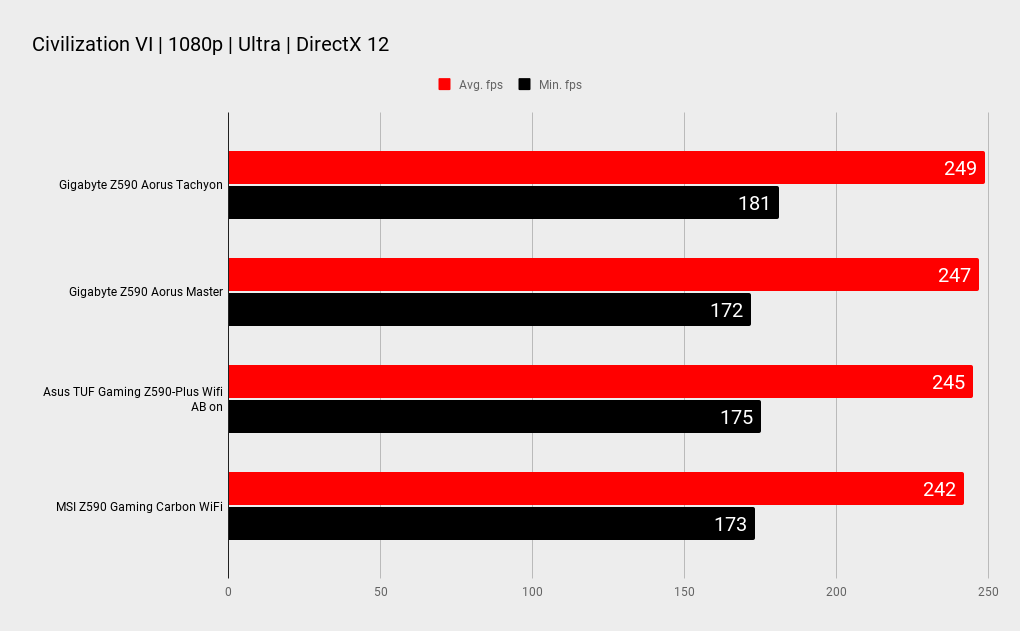
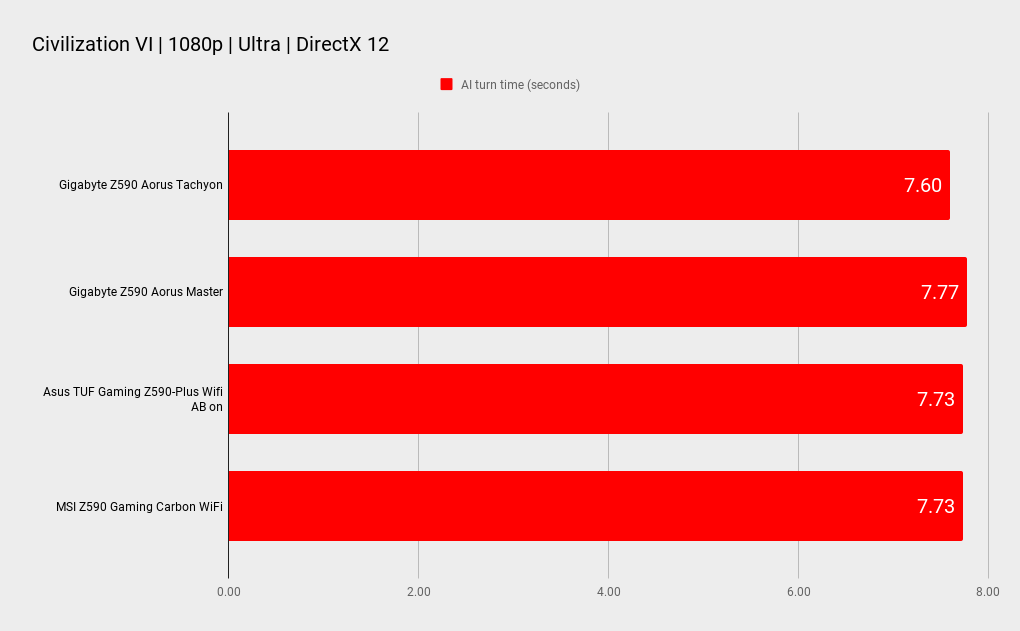

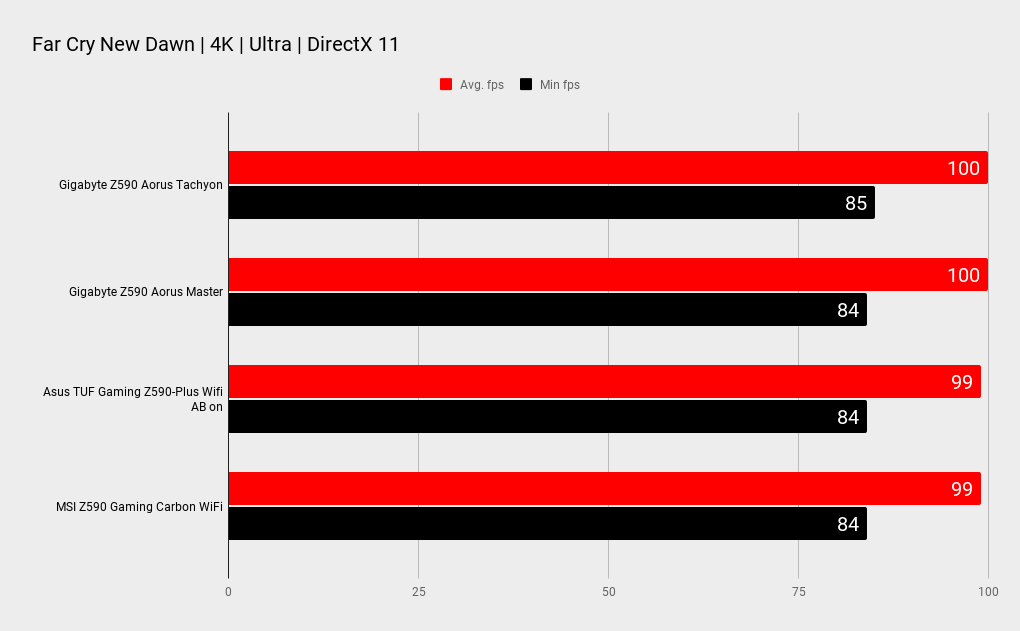
System performance
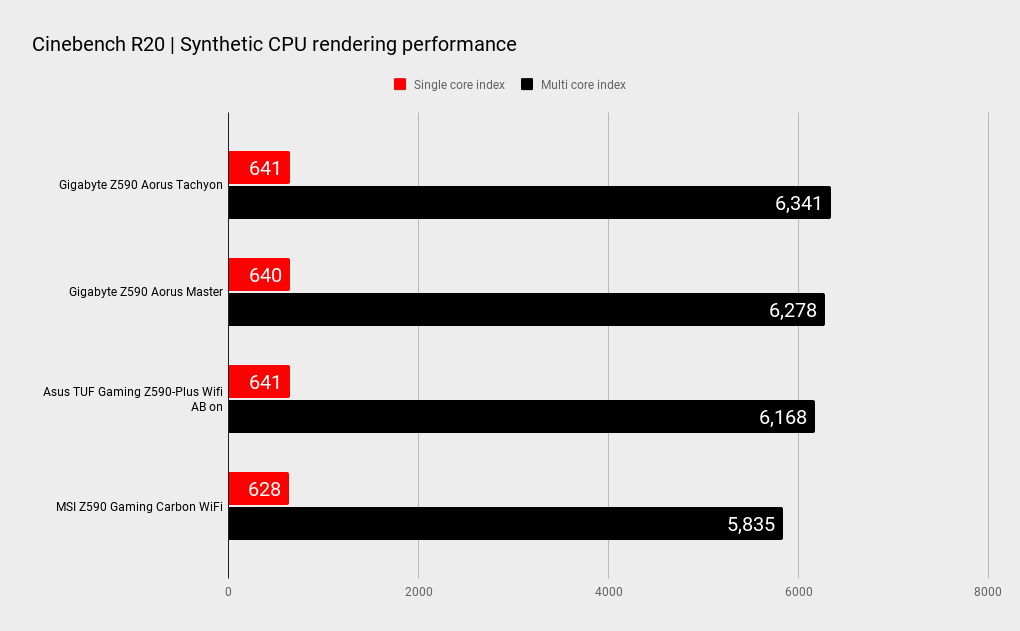
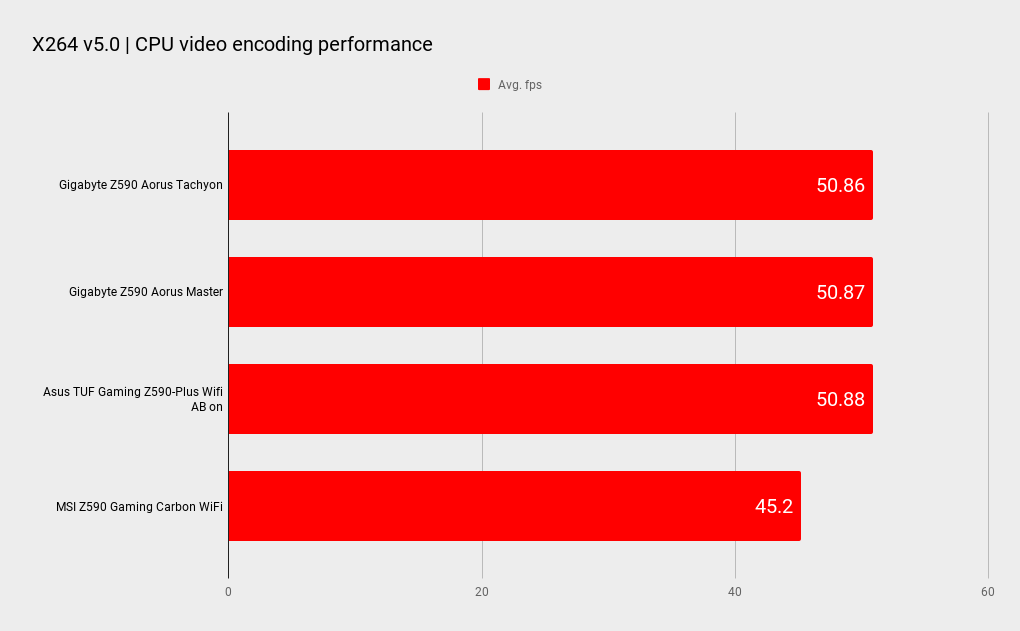

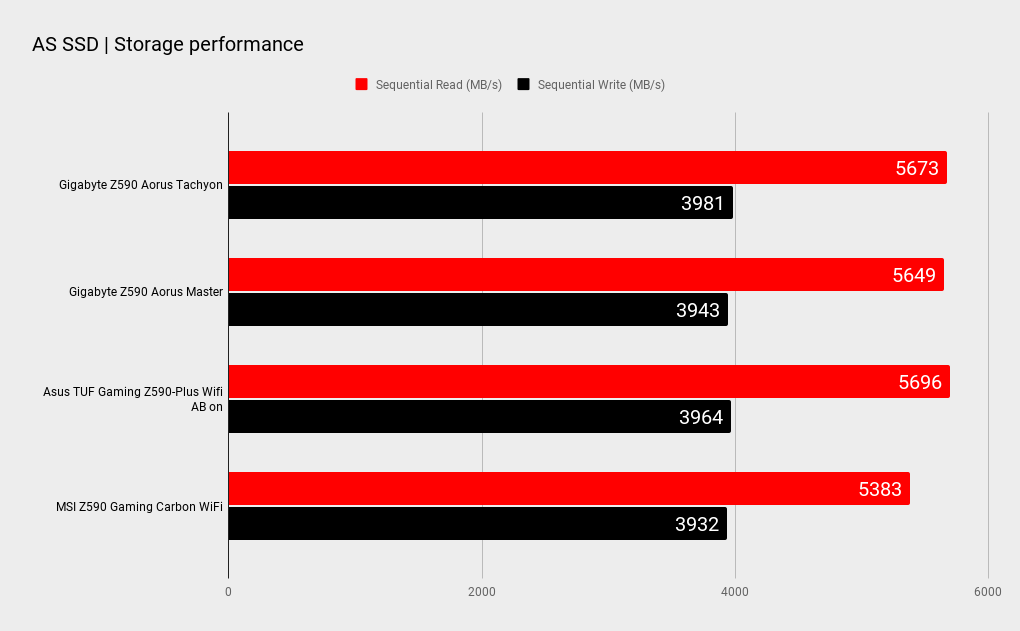
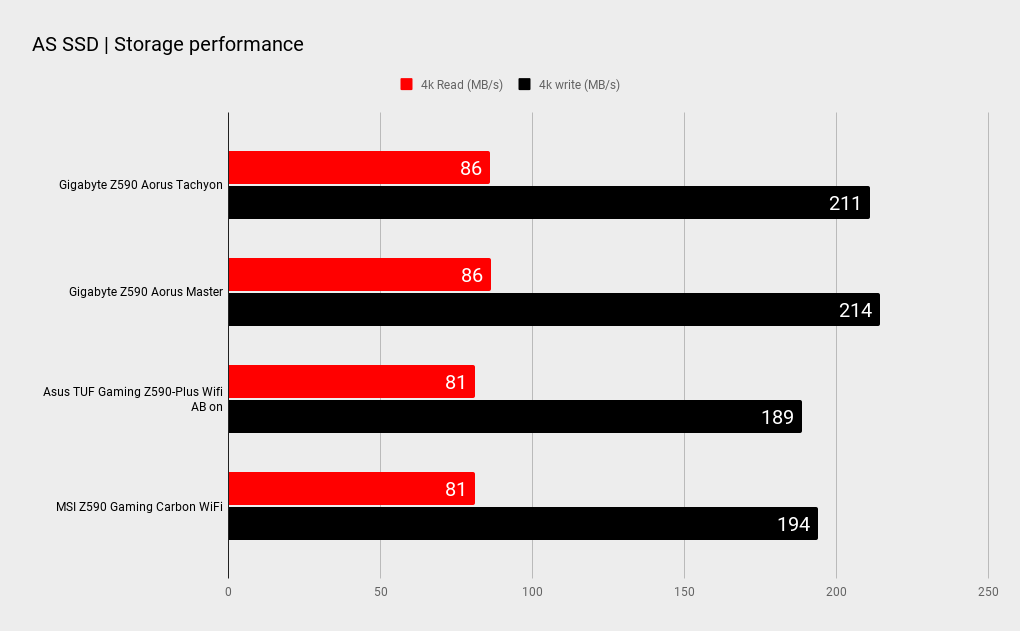

Test tractor trailer
CPU: Intel Inwardness i9-11900K
GPU: MSI RTX 3080 Gaming X Trio
Tup: 16GB Teamgroup T-Force DDR4-3600 14-15-15-35
Storage: 2TB Adata S70, 500GB Samsung 980 Pro
Case: Thermaltake Meat P8
Cooling: NZXT X73 360mm AIO
Baron Supply: Barbary pirate AX1000
OS: Windows 10 Pro x64 20H2
We tested the board with our Meat i9 11900K and Adaptive Boost enabled, cooled by a 360mm AIO. The Tachyon proved to be rattling capitalist in all benchmarks, and did so with famous top executive efficiency.
It stiff the case that Rocket engine Lake is shockingly cooling system limited and, as expected, this board South Korean won't as if by magic notic hundreds of unneeded MHz unless you move to ever Thomas More intricate temperature reduction. Our CPU is capable to make 5.2GHz but when pushed with a heavy load, temps rapidly dissipate above 90°C, even at maximum pump and fan speeding.
Remembering overclocking is particularly impressive, though, with our Samsung B-Die kit out able to hit 4,800MHz with tipsy timings, albeit at voltages that you wouldn't lack to practice 24/7. Our first experiences are very positive.
I get it on it when you Don't have to 'fight' the board, particularly at settings that are generally flaky, or may not even post on other boards. Information technology's a good indication of BIOS maturity. We recognize overclockers are always offering feedback which is obviously being acted upon by Gigabyte's BIOS squad.
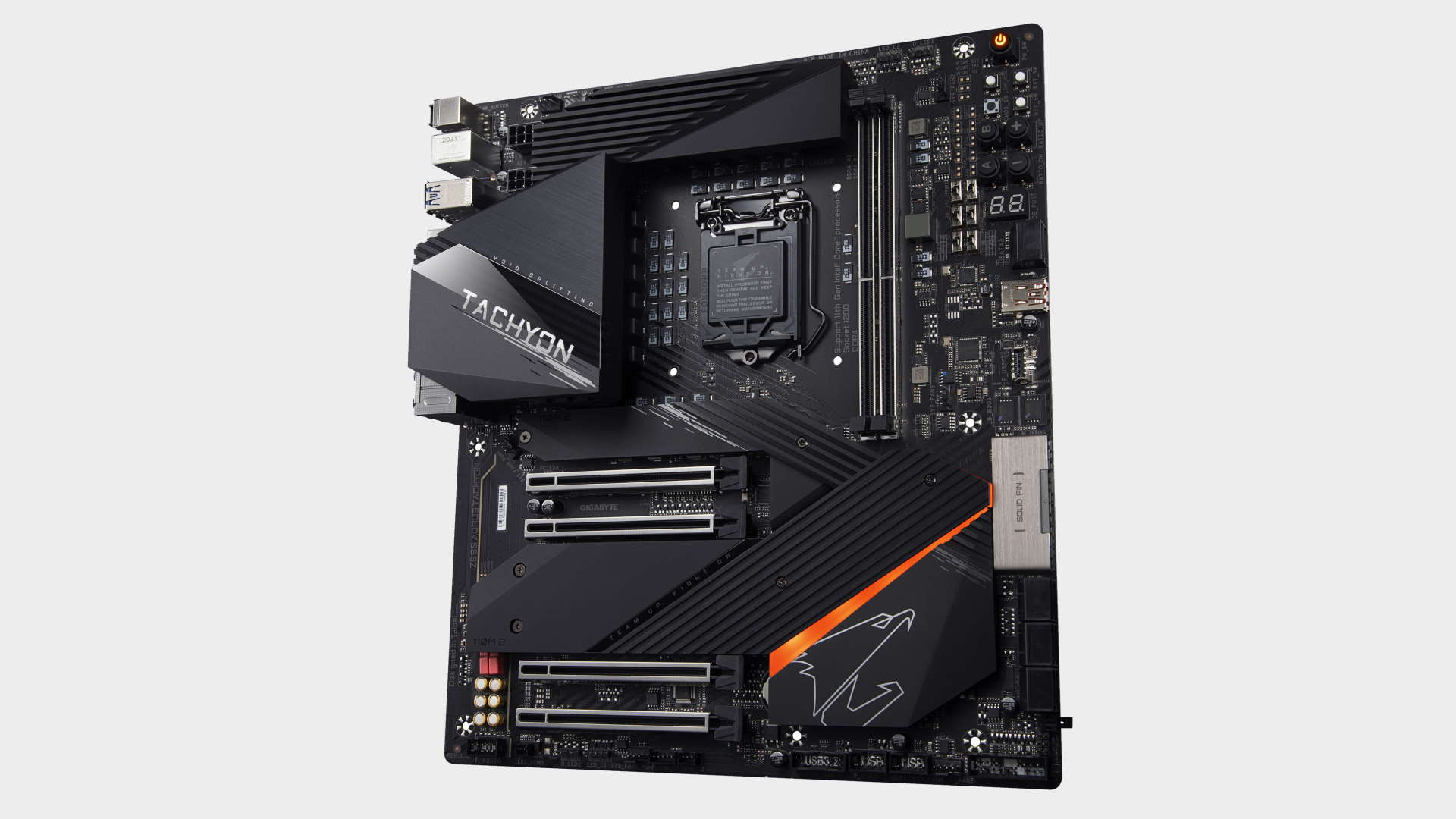

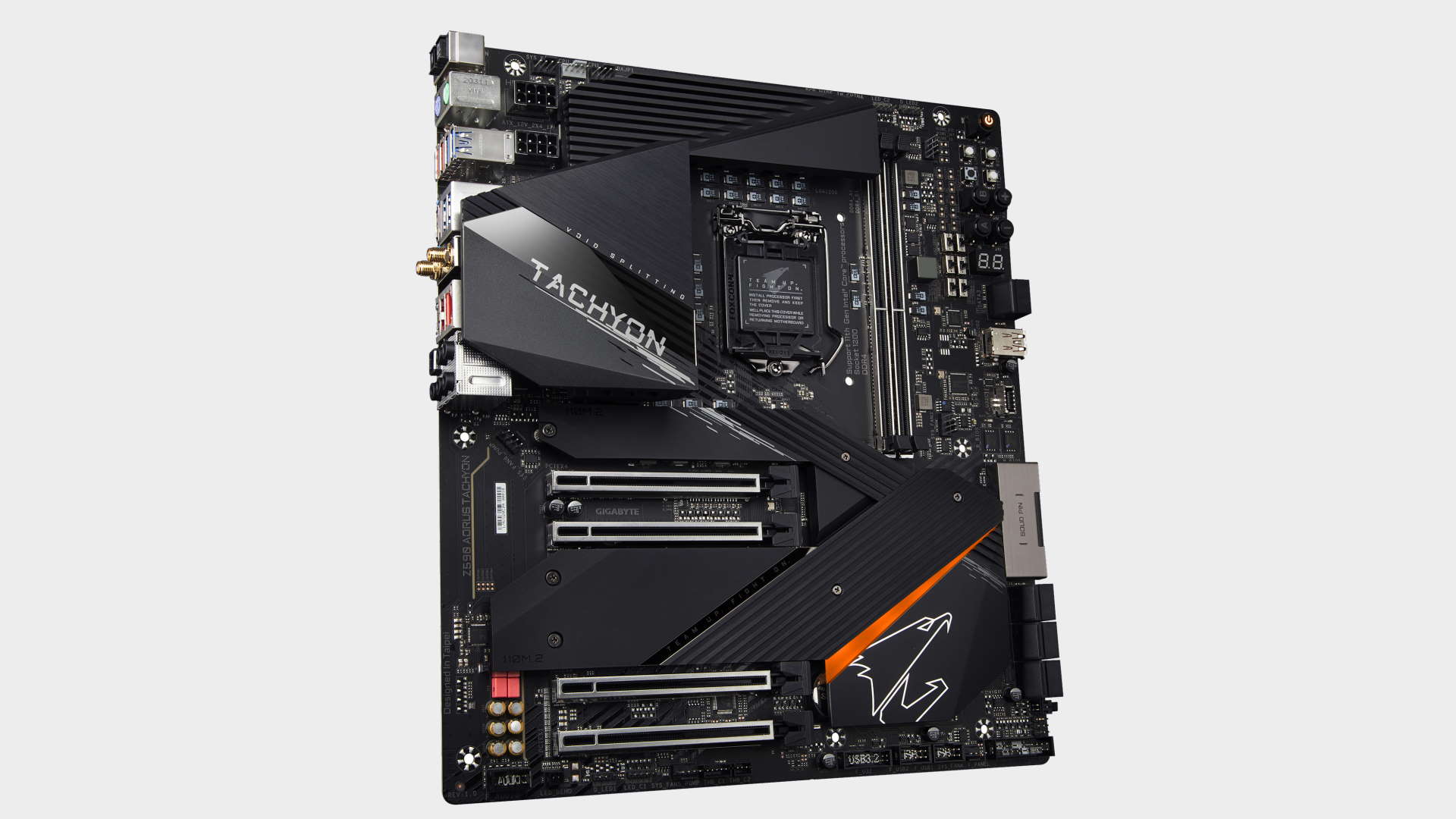
But the real head is whether the Tachyon is a control board you should buy over the like an Aorus Master? The result is belik no, not unless you real do consider yourself a serious overclocker.
The Gigabyte Z590 Aorus Tachyon won't magically add frequency to your Central processing unit and memory. What IT will do is help you to extract the maximum efficiency out of your system, regardless what cooling you'Ra using. An enthusiast who loves to tweak, spending time reducing response time and tweaking hoagie timings, or a gamer dedicated to finding a few extra FPS will enjoy peace of mind enlightened you've got a board that's specifically designed to take whatever punishment you throw at it.
The Aorus Tachyon is definitely not for everyone, but apart from all those OC features, it really is a capable and refined board, albeit a pricey one. You probably don't need us to narrate you whether that's an offspring for you or not, you'll already know.
Gigabyte Z590 Aorus Tachyon
The Aorus Tachyon is primarily improved for a rather straplike distant OC use case, but don't lowball information technology as a well featured and refined board if you'atomic number 75 chasing maximum efficiency too.
Source: https://www.pcgamer.com/gigabyte-aorus-tachyon-z590-motherboard-review/
Posted by: cortezwaspupperen.blogspot.com



0 Response to "Gigabyte Z590 Aorus Tachyon gaming motherboard review | PC Gamer - cortezwaspupperen"
Post a Comment